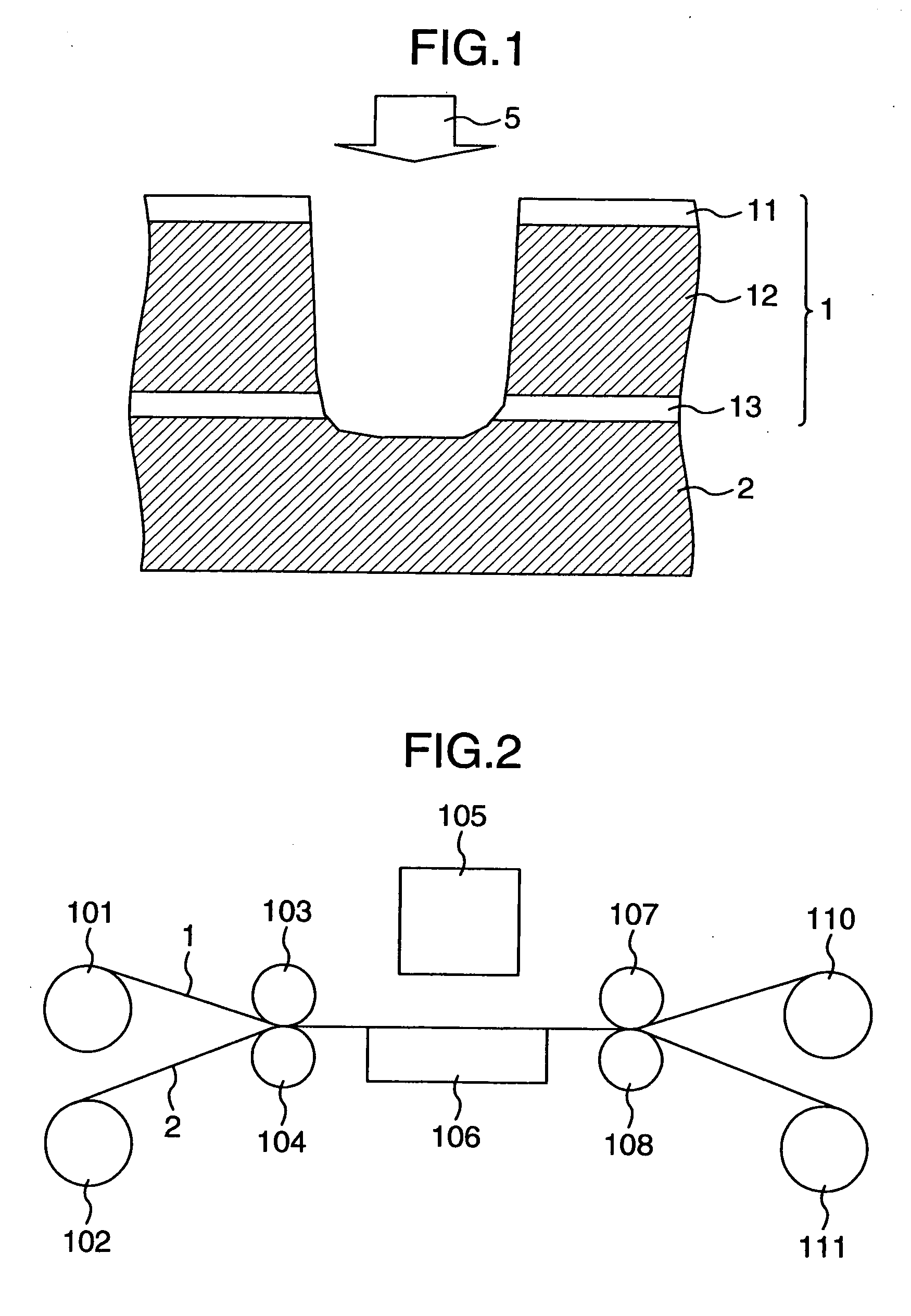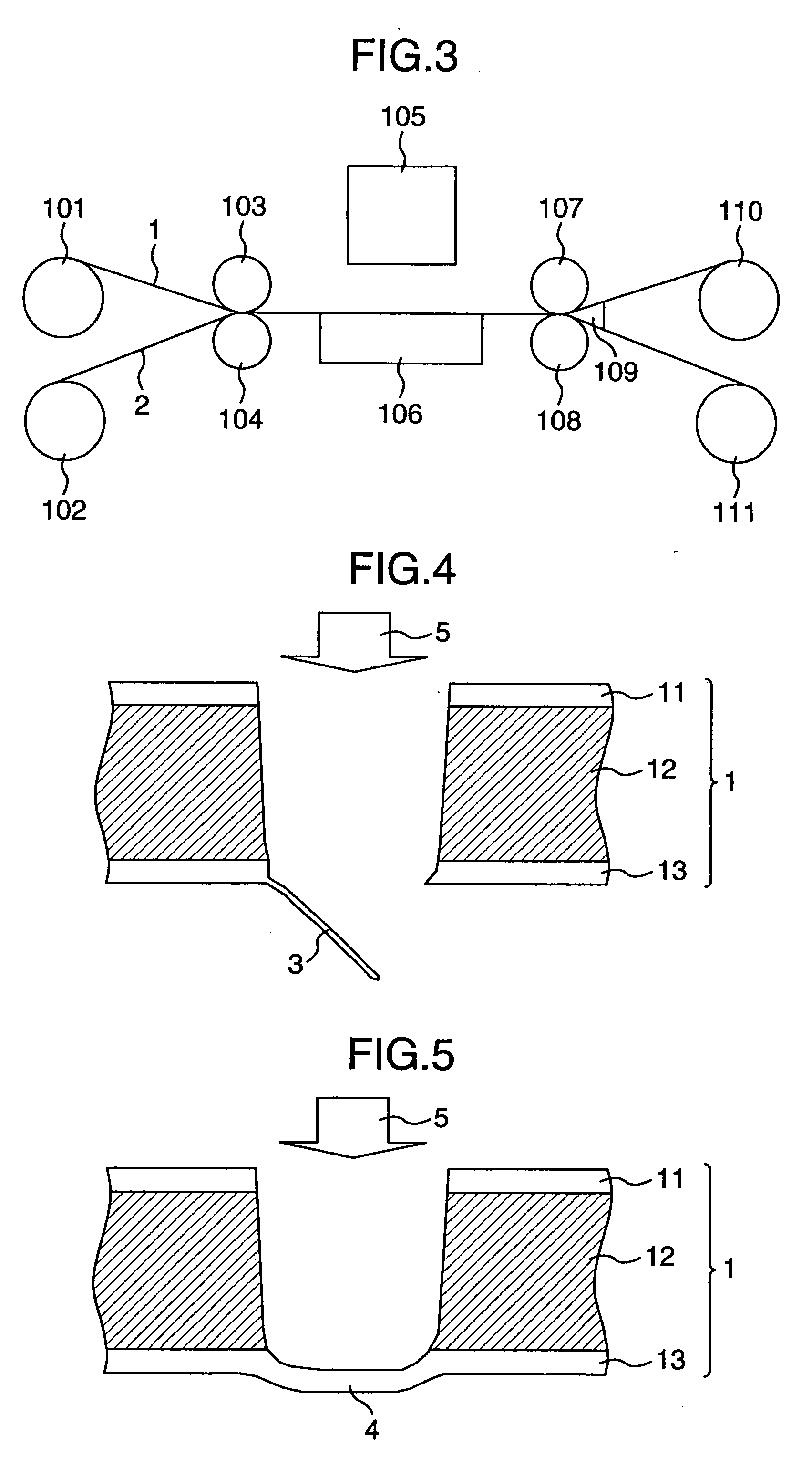Method and apparatus for laser drilling
- Summary
- Abstract
- Description
- Claims
- Application Information
AI Technical Summary
Benefits of technology
Problems solved by technology
Method used
Image
Examples
Embodiment Construction
[0023] Now, an embodiment of the invention will be described with reference to the drawings. FIG. 1 is an illustration of a drilling method according to the invention. Here, reference numeral 1 denotes a double-sided copper-clad film (a width of 70 to 500 mm) consisting of copper foils 11 and 13 of 3 to 5 μm thick whose surfaces are not roughened, and a polyimide insulating resin film 12 of 25 to 30 μm thick. The copper foil 11 is not always necessary in the laser drilling method according to the invention, and the copper foil 13 having a current thickness of 18 μm or more is similarly processable. Reference numeral 2 denotes a resin film bonded to the backside thereof, and reference numeral 5 denotes an incident direction of an ultraviolet laser beam. A polyethylene based material is preferable as the resin film 2. The thickness of 25 μm or more is effective, and the thickness of 50 μm or more is more preferable in practical use. The example in FIG. 1 shows a through hole formed. T...
PUM
| Property | Measurement | Unit |
|---|---|---|
| Pressure | aaaaa | aaaaa |
| Expansion enthalpy | aaaaa | aaaaa |
Abstract
Description
Claims
Application Information
 Login to View More
Login to View More - R&D
- Intellectual Property
- Life Sciences
- Materials
- Tech Scout
- Unparalleled Data Quality
- Higher Quality Content
- 60% Fewer Hallucinations
Browse by: Latest US Patents, China's latest patents, Technical Efficacy Thesaurus, Application Domain, Technology Topic, Popular Technical Reports.
© 2025 PatSnap. All rights reserved.Legal|Privacy policy|Modern Slavery Act Transparency Statement|Sitemap|About US| Contact US: help@patsnap.com



